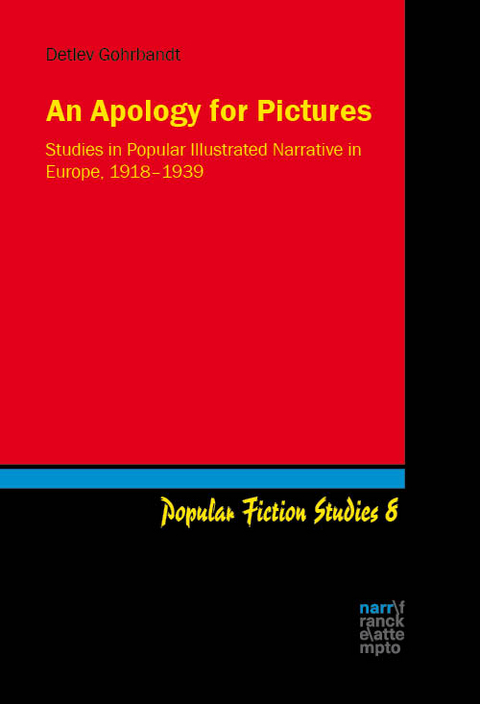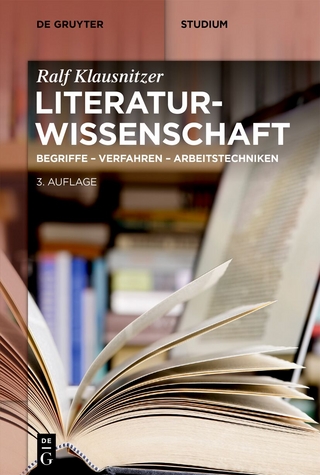
An Apology for Pictures
Narr Francke Attempto (Verlag)
978-3-8233-8564-6 (ISBN)
For many children whose Grandma or Dad spent hours reading to them from illustrated books, these hours have opened the gateway to reading for themselves. Once the children's curiosity is aroused, talking with them about the stories and their illustrations will lead them to look for themselves, to ask questions, decipher speech bubbles and captions, and soon find themselves on the road to reading. Adult readers, who are often not practised readers themselves, will benefit from the illustrations in much the same way, by helping them to visualise characters and settings. In the period between the two world wars, many people in France, Germany and Britain were grateful for the illustrated novels published in inexpensive but nonetheless quality series, and even became collectors. The comparative study of these books reveals much about how texts and pictures interact, and at the same time shows up cultural developments and differences.
Prof. Dr. Detlev Gohrbandt unterrichtete von 1978 bis 2001 an der Universität des Saarlandes Englische Literaturwissenschaft, Landeskunde, English as a foreign language (EFL) und auch Fachdidaktik Englisch. Nach seiner Promotion (1975) und Habilitation (1995) hatte er den Lehrstuhl für English Cultural Studies an der Universität Landau inne (2001-2009) und lehrte dort Fachdidaktik Englisch.
Introduction: The importance of popular illustrated narrative
1.1 How this study was born and grew up
1.2 Adjunctive relations between verbal and visual artefacts
1.3 Models for the cultural study of the illustrated book
2 Invention, decline and reform in the history of book illustration, 1850-1932
2.1 Techniques and economics of book illustration
2.2 Art and ethics of the illustrated book in England
2.3 Components of the book reform movement in Germany
2.4 Book reform in France from Bracquemond to Pelletan
3 Popular illustrated fiction from 1918 to 1939 - some major series
3.1 The many meanings of "popular"
3.2 Popular illustrated fiction series in France
3.2.1 Arthème Fayard's Le Livre de Demain (1923-47)
3.2.2 Joseph Ferenczi & Fils: Le Livre Moderne Illustré
3.2.3 The Grand Prix Gustave Doré and the rules of illustration
3.2.4 The Librairie Hachette and Les Grands Écrivains
3.3 German illustrated book series:
3.3.1 Illustrated fiction in the Insel-Bücherei
3.3.2 Samuel Fischer: Fischers Illustrierte Bücher
3.3.3 Kurt Wolff: Die Schwarzen Bücher and other series
3.4 Illustrated fiction series in Britain
3.4.1 John Lane The Bodley Head
3.4.2 Chatto & Windus and the Phoenix Library
3.4.3 Penguin and the Illustrated Classics
4 The semiotics and rhetoric of illustrated fiction
4.1 Kinds of ornament and illustration
4.2 Frans Masereel and the architecture of the illustrated book
4.3 Verbal and visual signs in The Patriot's Progress
5 Case studies in writers and illustrators
5.1 Five illustrated versions of Flaubert's "Un Coeur simple" (Trois Contes) illustrated by Albert Hoppler (1918), Robert Diaz de Soria (1923), Félix Vallotton (1924) and Georges Le Meilleur (1927)
5.2 Illustrating an argument: Bernard Shaw and John Farleigh
5.3 Robert Budzinski - artist and writer in a disrupted world
6 Afterword: Some conclusions and an outlook
Appendices
| Erscheinungsdatum | 27.05.2024 |
|---|---|
| Reihe/Serie | Popular Fiction Studies ; 8 |
| Sprache | englisch |
| Maße | 150 x 220 mm |
| Gewicht | 727 g |
| Themenwelt | Geisteswissenschaften ► Sprach- / Literaturwissenschaft ► Literaturwissenschaft |
| Schlagworte | Buchillustration • Buchkunst • Buchwissenschaft • Gattungen der Buchillustration • Populäre Erzähltexte 1918-1939 • Techniken • Text-Bild-Beziehungen |
| ISBN-10 | 3-8233-8564-X / 382338564X |
| ISBN-13 | 978-3-8233-8564-6 / 9783823385646 |
| Zustand | Neuware |
| Informationen gemäß Produktsicherheitsverordnung (GPSR) | |
| Haben Sie eine Frage zum Produkt? |
aus dem Bereich


